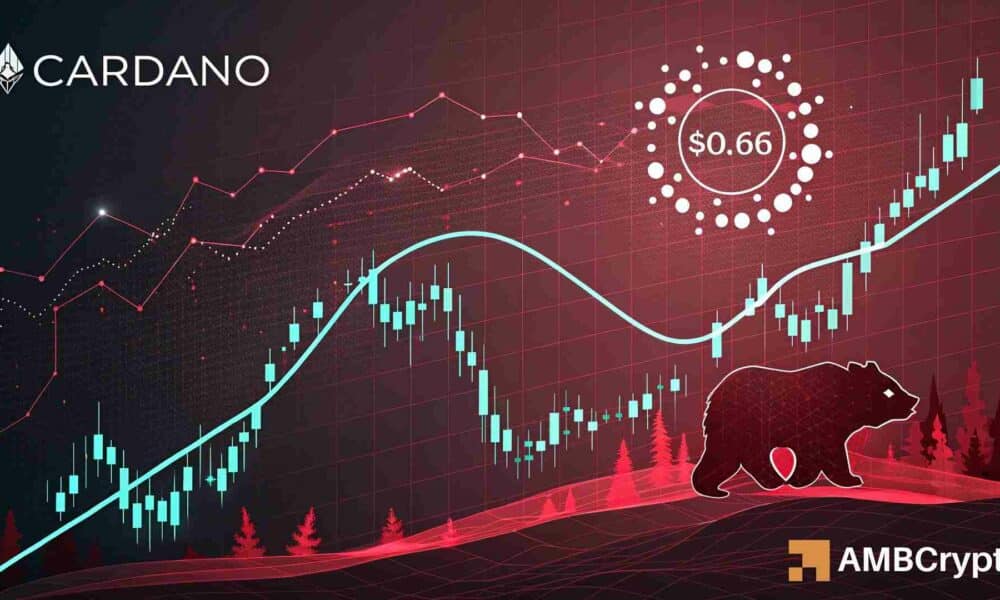Cardano Faces a Sharp 20% Decline: Understanding the Causes and Future Potential
Introduction: Cardano’s Recent Price Drop
In the last 24 hours, Cardano (ADA) has experienced a significant price drop of over 20%, marking a bearish shift in the overall altcoin market sentiment. This decline has not only flipped the market structure into bearish territory but has also positioned ADA below its critical 50-day and 100-day Exponential Moving Averages (EMAs). Such technical indicators suggest that sellers currently dominate the market, leading to increased volatility and selling pressure.
Analyzing the Breakdown: Market Sentiment Shift
Several factors have contributed to Cardano’s sharp decline. The most notable is a breakdown below crucial EMAs, which signals a possible trend reversal. For weeks, ADA had been consolidating and showcasing a steady bullish run, but the current downturn has raised questions about its short-term viability. The recent price action has led traders to reassess their positions and adjust their strategies, heightening the overall market volatility.
Support Levels: Key Zones to Watch
Despite the intense selling pressure, ADA’s latest dip has filled a crucial market imbalance near the $0.6671 support zone. This level may emerge as a vital point for potential buyers looking to step in and stabilize the price. It’s important to note that historical data suggests such support zones are often areas of accumulation for long-term investors who seek to capitalize on discounted assets. If buying pressure can be successfully re-established at this level, ADA could stabilize and potentially retest the $0.70–$0.75 range.
Funding Rates and Market Sentiment
The current atmosphere surrounding Cardano is further complicated by negative funding rates across major exchanges. According to Messari’s Weighted Funding Rate Data, derivatives traders appear to be increasingly pessimistic about ADA’s short-term recovery potential. The shift into negative funding rates indicates a predominant sentiment betting against price recovery, which could further exacerbate selling pressure if market conditions do not improve.
Assessing Selling Dominance: Volume and Futures Activity
CryptoQuant’s Cumulative Volume Delta data reveals a concerning trend: selling dominance is prevalent across both the Spot and Futures markets. This imbalance suggests that short positions substantially outweigh longs, indicating a broader bearish sentiment among traders. Additionally, the trading volumes accompanying ADA’s price movement do not correspond with the magnitude of the decline, signaling that recent price action might be influenced more by manipulation than organic market behavior.
Future Outlook: Will the Bulls Defend Support?
Despite the grim short-term outlook, there are signs that buyers might attempt to defend the $0.6671 support zone. If sufficient buying pressure emerges, ADA could stabilize and set up a retest of higher levels. However, the immediate market momentum still leans towards bearishness, and prospective investors should approach with caution. The next few days are critical for assessing whether ADA can regain its footing or if it will succumb to continued bearish pressure.
Conclusion: Navigating the Uncertain Waters of Cardano
As Cardano faces significant challenges in the current market milieu, traders and investors must stay vigilant and informed. The combination of bearish indicators, declining funding rates, and heightened selling dominance presents a cautious landscape. Nevertheless, the crucial support levels and historical accumulation behaviors suggest a potential ground for recovery if buyers can effectively rally around the price fluctuations. Ultimately, the next steps for Cardano will unfold over the coming days, making it imperative for stakeholders to monitor market developments closely.


